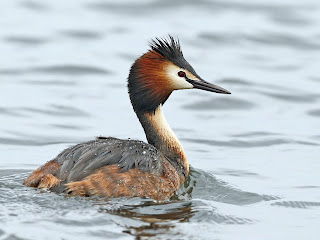Shag
Phalacrocorax
aristotelis
The
shag is widely distributed on the western coast of the Murmansk region, in
Norway, Iceland, the British Isles, Ireland, the coast of Western Europe as far
as the islands of the Mediterranean and also on the coast of southeastern
Europe. In some places it is resident, in others a dispersive bird. It is found
exclusively on seacoasts, mainly ones with steep rocky cliffs. In winter it is
also found on the coasts of the North and Baltic seas. Only rarely does it
stray inland. It nests in looser colonies than the common cormorant. The nest,
made of seaweed, grass, leaves and small twigs, is placed on rock ledges. As a
rule the female lays two to six eggs between the beginning of April and end of
June, which the partners take turns incubating for thirty to thirty-two days.
Within half an hour of hatching the young are already clamoring for food, which
the parents give them three to four times daily. The young feed by thrusting
their heads into the throats of the parent birds. They remain in the nest for
47 to 50 days and then take to the water, though they are as yet unable to fly.
They begin to try their wings at the age of 55 to 58 days. The rate of
mortality among the young is high as many as eighty percent may die during the
first year, whereas that of adult birds is around fourteen percent. The shag
feeds exclusively on fish, for which it dives to depths of twenty meters.
|
Size of egg
|
56.6-74.6X34.9-41.7 mm
|
|
Length
|
76 cm. Male and female have similar plumage.
|
|
Voice
|
Usual note a loud, rasping croak
|









